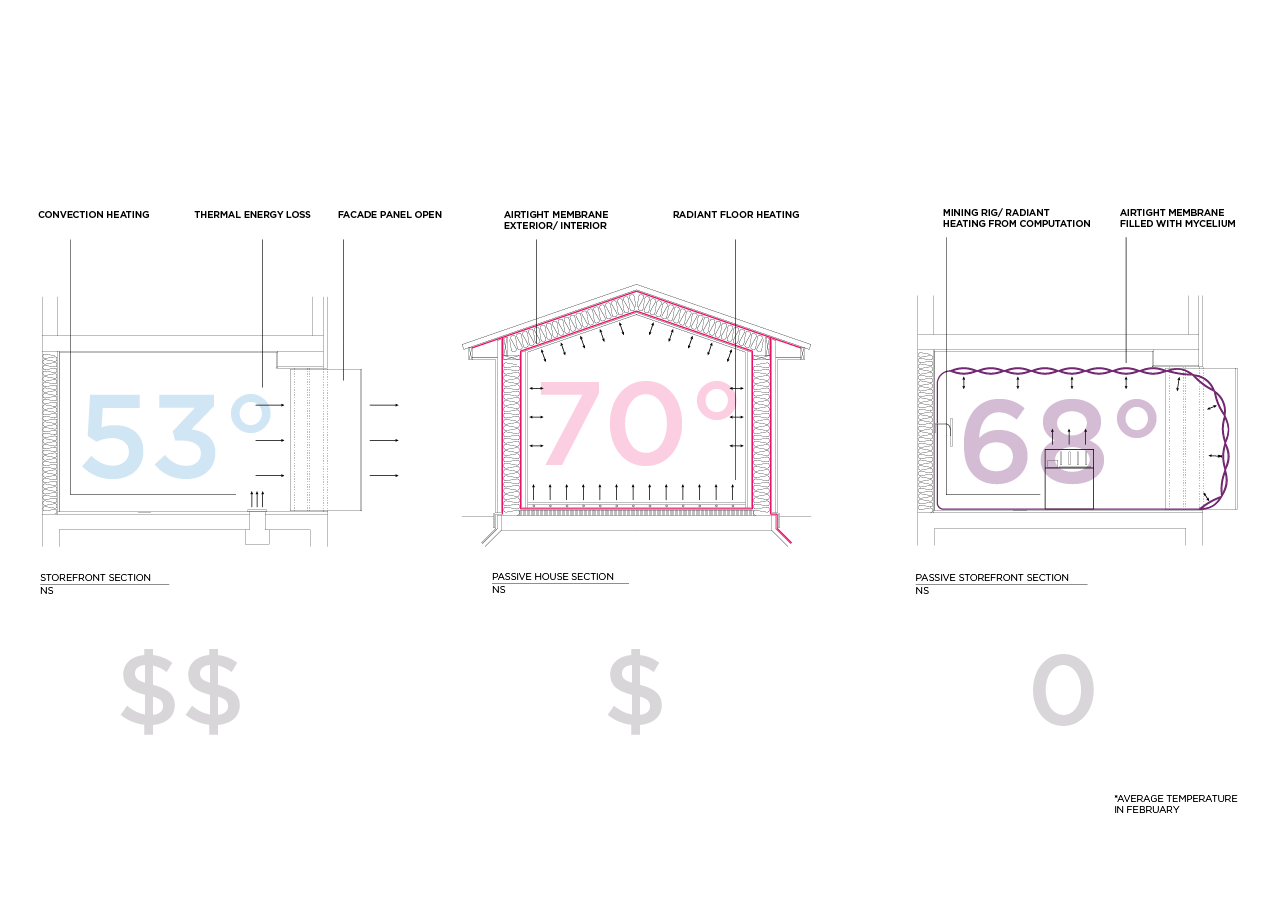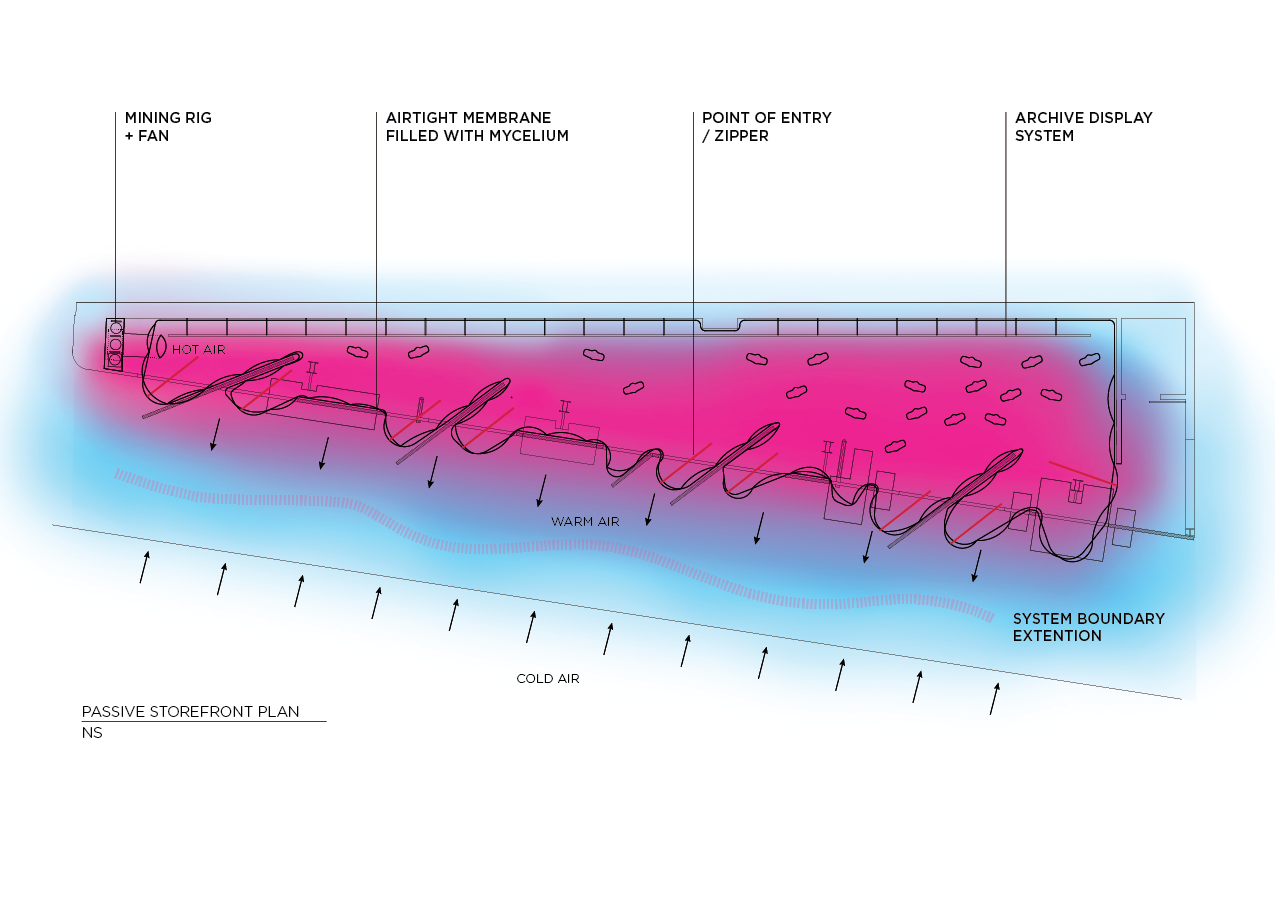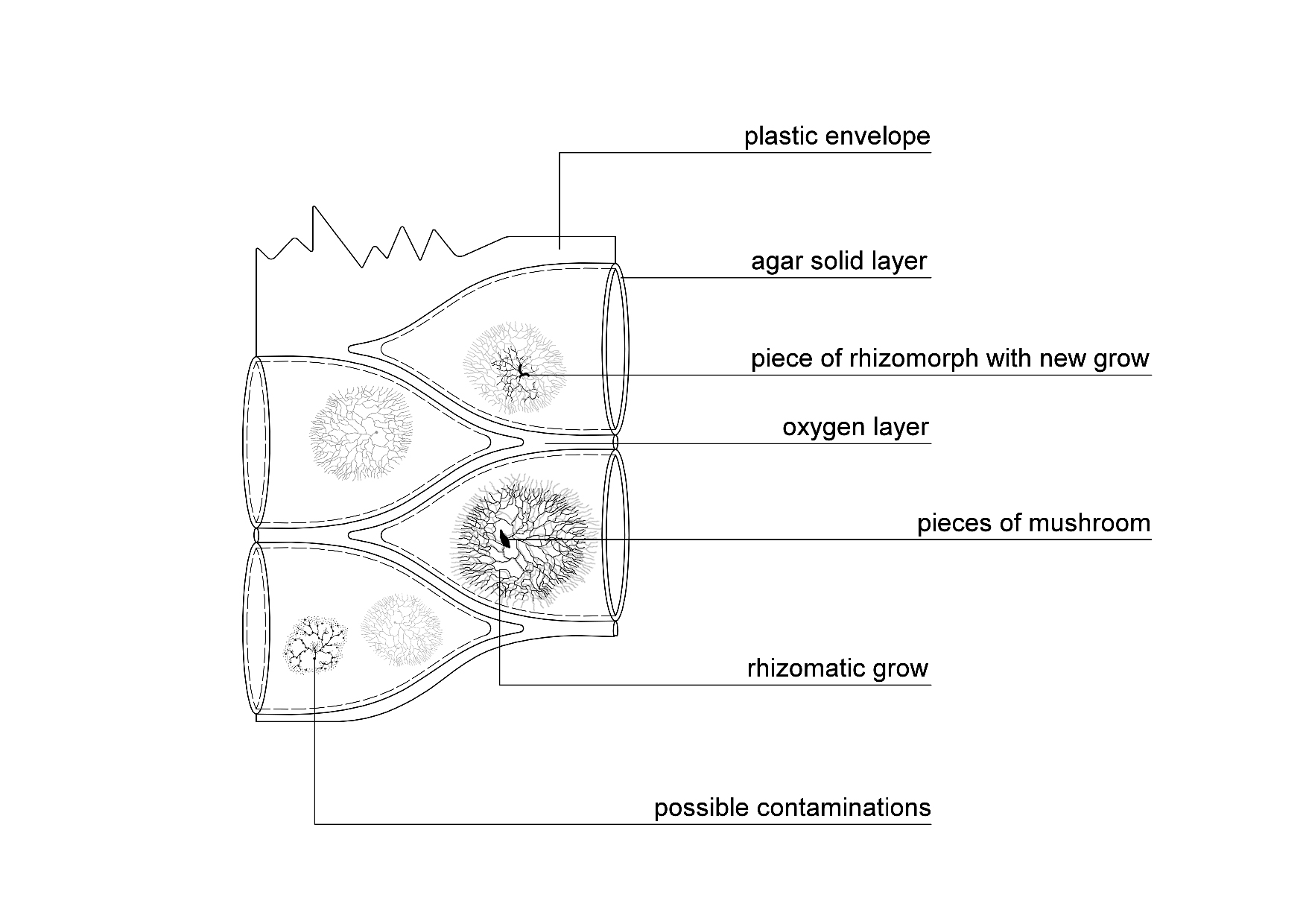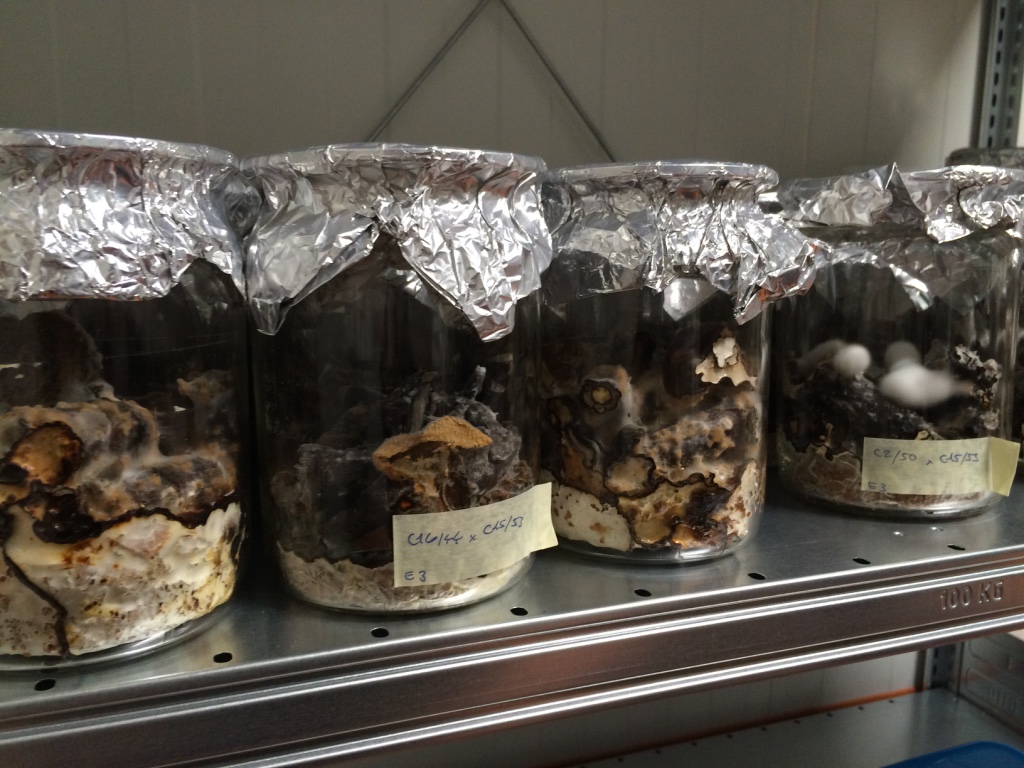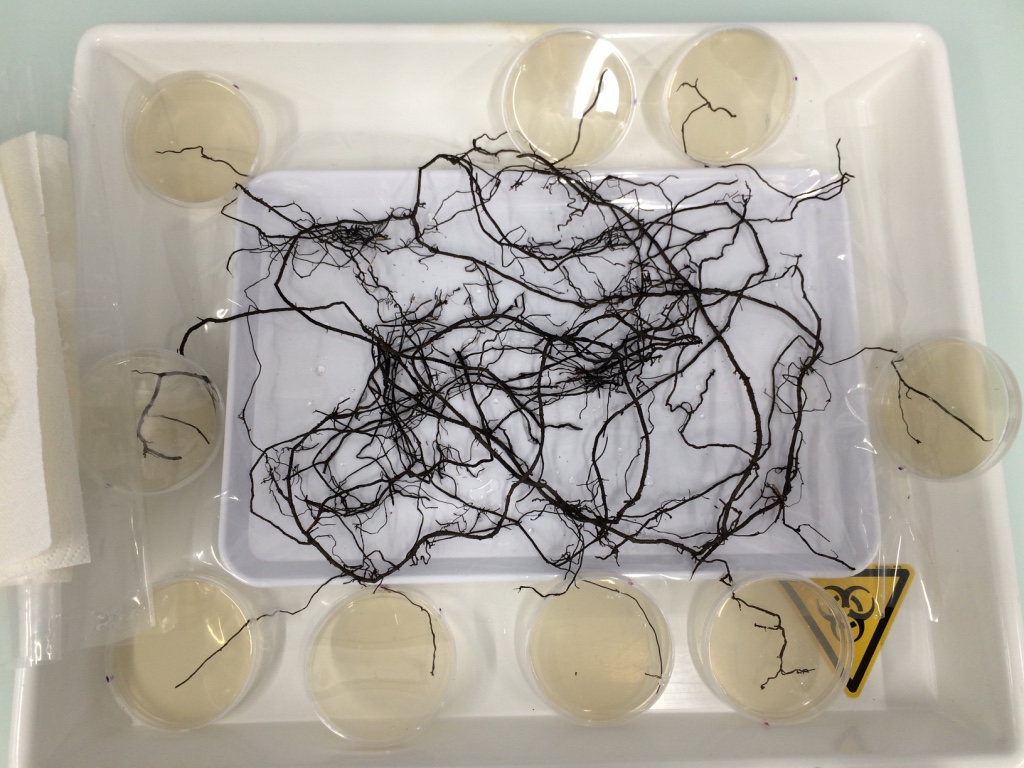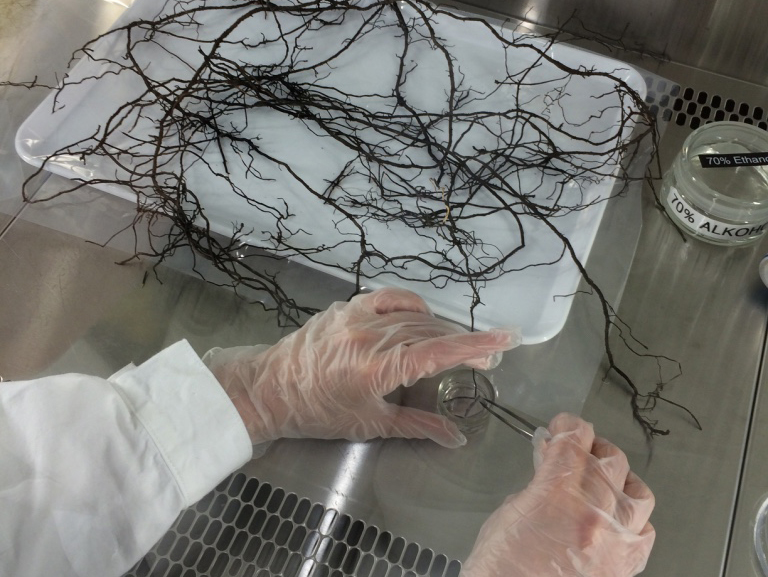Passive Storefront
Passive Storefront is a site specific installation proposed on the basis of testing a Passive House design schema for a new age of accelerating information technology. As a pneumatic closed world, with gradient conditions of atmospheric pressure and thermal boundaries, the schema is constructed of surplus heat and energy from cryptocurrency mining computers. The very fabric of this schema contains closed systems of Mycelium physiology.
Radiant heat is harnessed from the surplus energy and air ow of on site cryptocurrency mining computers, turning the membrane into a high pressured pneumatic environment. Mining supports the decentralized global network called the blockchain and generates revenue to cover the electricity costs of this schema.
Sealed within the membrane of Passive Storefront is a closed system of growing Mycelium, the root like interwoven threads of mushrooms. The mining heat enhances growth and the Mycelium further insulates the space turned laboratory.
Mycelium is being explored to create organic building materials and will soon be used as insulation in Passive House design. The architecture of Mycelium is an open network, a living organism as sentient web, resembling the Internet. When grown closed, it metaphorically it represents a critique of closed systems.
Passive Storefront is a new Passive House schema: a closed world made of closed systems that are ultimately part of an open global network.
Credits: "Passive Storefront" by FOAM DAO and Urban Fauna Lab. Design Team: Ryan John King, Ekaterina Zavyalova, Nastya Potemkina. Produced for the Closed Worlds Competition by Storefront for Art and Architecture.

